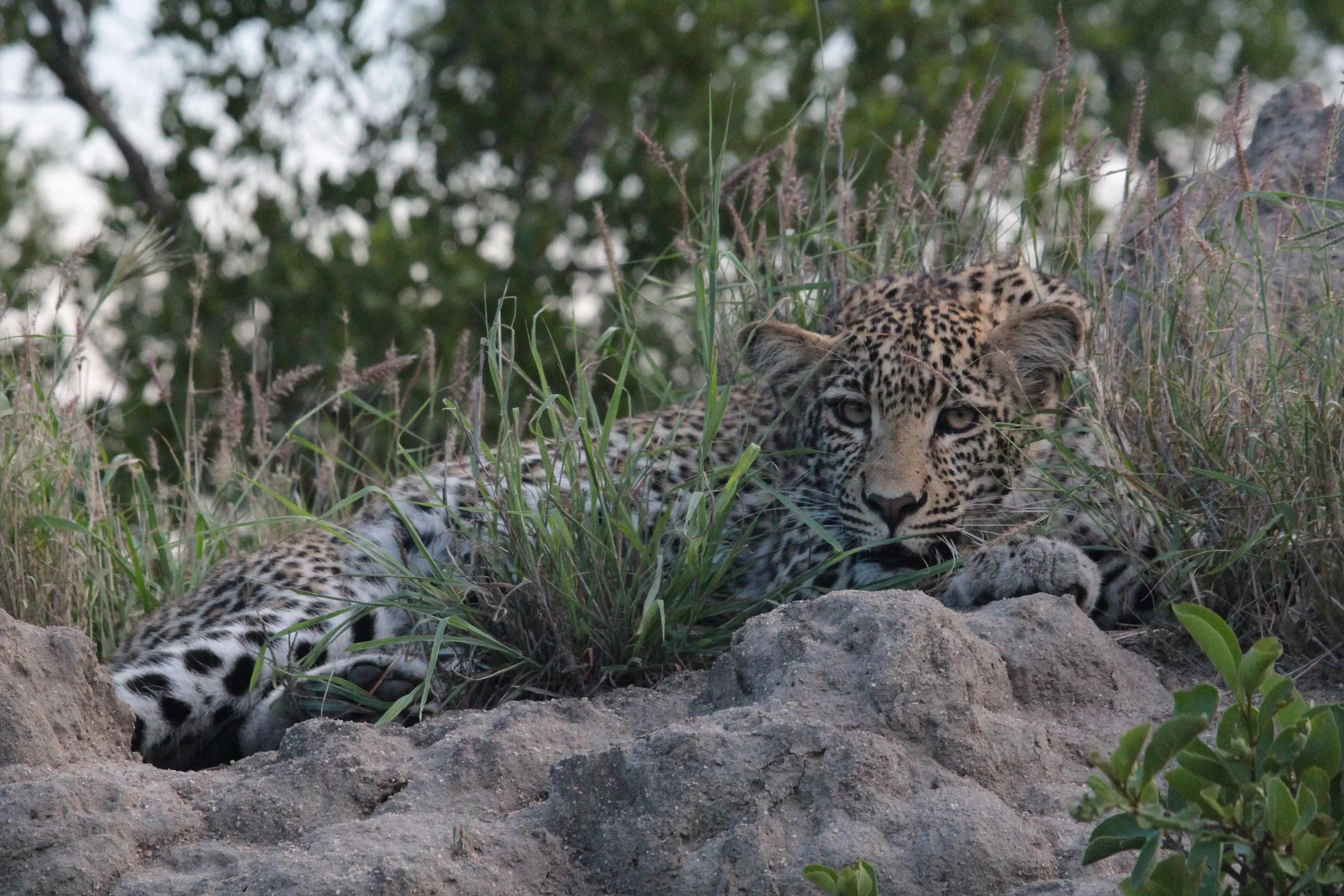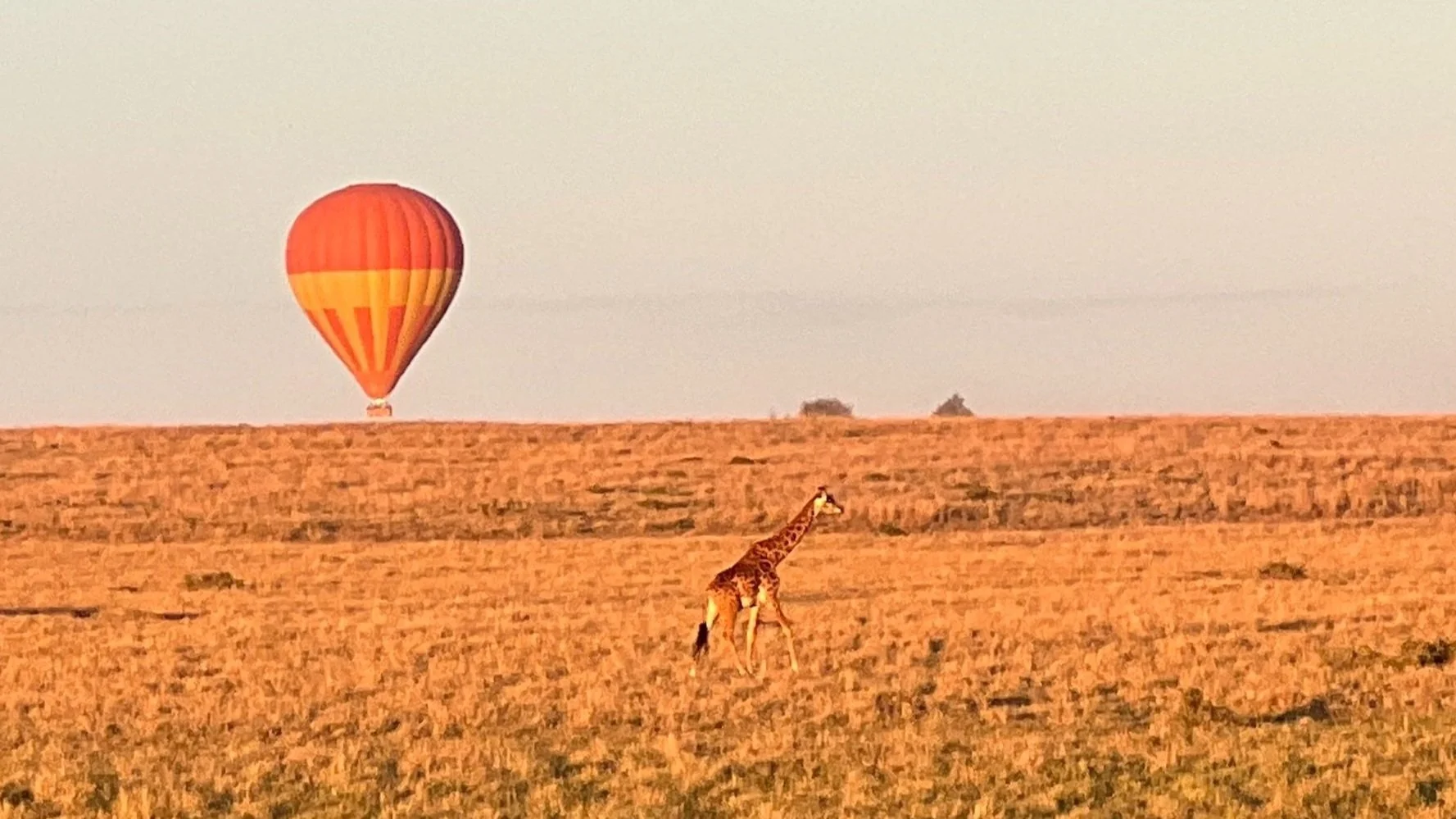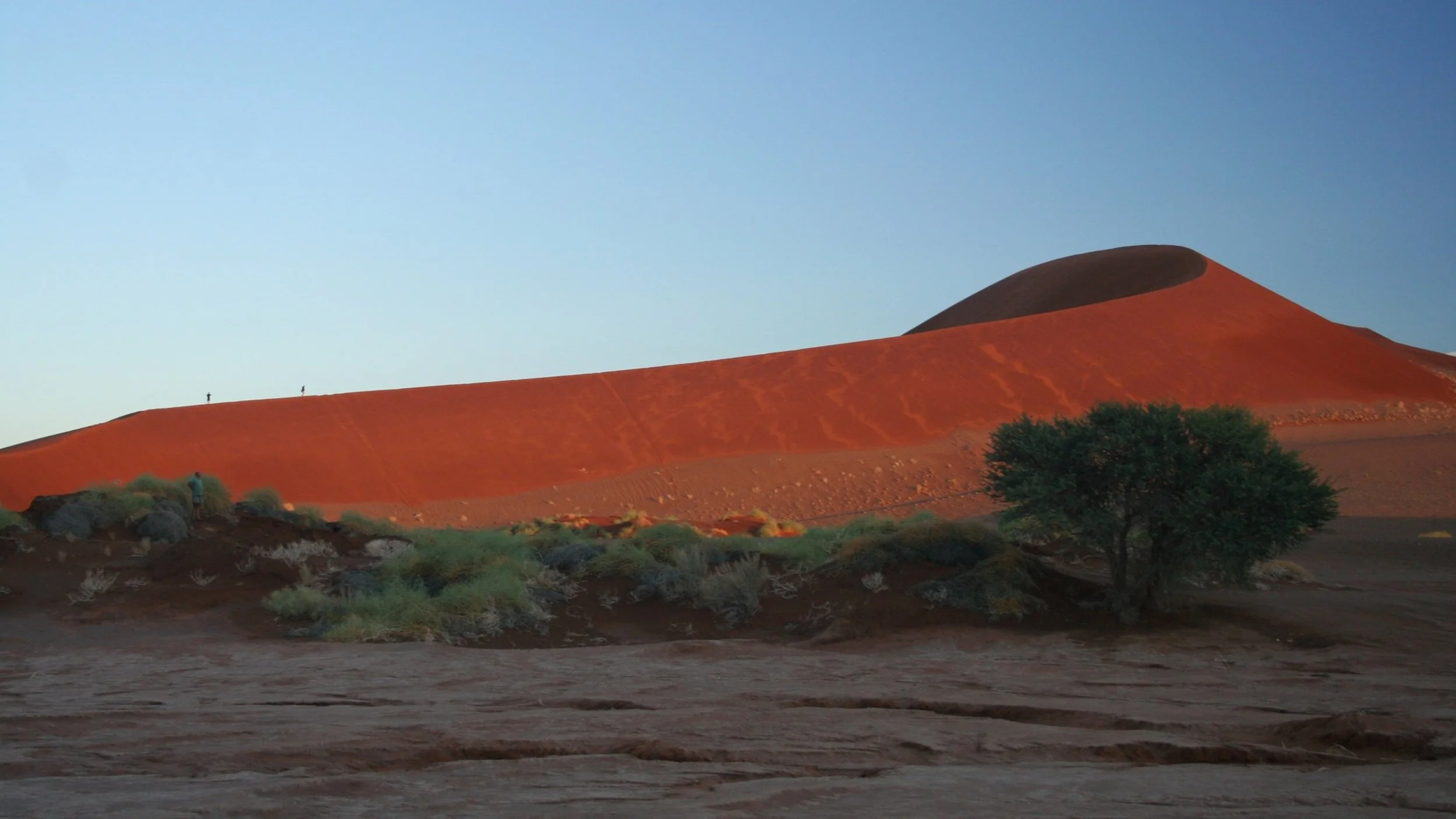My African Safari Bucket List: 13 Must-Do Wildlife Adventures
Planning the perfect African safari can feel overwhelming when you're faced with an entire continent of incredible wildlife experiences. From tracking Mountain Gorillas in highland forests to floating over the Maasai Mara in a hot air balloon, Africa offers safari adventures that will fundamentally change how you see the natural world.
Whether you're a first-time safari-goer or a seasoned bush veteran, here's my complete African safari bucket list covering the absolute must-do experiences that define what makes an African safari so utterly life-changing. I've personally experienced every single one of these adventures, and each holds a special place in my heart for different reasons.
1. Witness the Great Migration in Kenya and Tanzania
The Great Migration isn't just a wildlife spectacle – it's one of nature's most dramatic natural cycles, and witnessing it ranks among the most extraordinary experiences our planet offers. Every year, over two million wildebeest, zebras, and gazelles follow the rains on ancient migration routes between Tanzania's Serengeti and Kenya's Maasai Mara.
Best Time to Visit
What most travellers really want to see is a river crossing, and I completely understand why. Between July and October, massive herds gather along the Mara River, where crocodile-infested waters create a treacherous barrier. The sheer volume of animals, combined with the life-and-death drama, creates a safari experience that photographs and videos simply cannot capture adequately – you truly have to be there to understand the raw power of it all.
For optimal migration viewing, I always recommend staying in mobile camps that follow the herds, ensuring you're always positioned for the best wildlife photography and game viewing opportunities.
Where to Stay
Tanzania: Serengeti Mobile Camp and Ubuntu Migration Camp offer luxury tented accommodation that moves with the herds, whilst the exclusive Singita Grumeti reserve provides gorgeous permanent bases in one of the best locations possible.
Kenya: Focus on private conservancies for exclusive migration viewing: Mara Plains on Olare Motorogi offers luxury and exceptional standards of hospitality and guiding. Offbeat Mara Camp (Mara North) and Encounter Mara (Naboisho) offer excellent value in exclusive conservancy settings with fewer crowds and night drive opportunities unavailable in the main reserve.
2. Track Mountain Gorillas in Uganda and Rwanda
📸 : A gorilla in Bwindi Impenetrable Forest
Gorilla trekking tops many bucket lists, and having experienced it myself, I can honestly say it represents the pinnacle of primate encounters in Africa. Both Uganda's Bwindi Impenetrable Forest and Rwanda's Volcanoes National Park offer extraordinary opportunities to observe mountain gorillas in their natural habitat.
Uganda vs Rwanda for Gorilla Trekking
Rwanda typically offers easier trekking conditions and shorter hikes, making it ideal for those with mobility concerns. Uganda, meanwhile, provides a more adventurous jungle experience with potentially longer, more challenging treks through dense rainforest. Both destinations offer equally spectacular gorilla encounters, where you'll spend a precious hour observing these gentle giants just metres away.
Permits and Conservation Impact
The permits are expensive (around $800 in Uganda and $1500 per person at time of writing), but the conservation impact and emotional significance of supporting these critically endangered species makes gorilla trekking one of Africa's most meaningful wildlife experiences. The brilliant news is that conservation is working – the population has increased from only 250 in the 1960s to over 1000 today.
Where to Stay
Rwanda: Bisate Lodge and One&Only Gorilla's Nest offer luxury accommodation near Volcanoes National Park.
Uganda: Top options include Bwindi Lodge near the Bahoma HQ or Clouds Mountain Gorilla Lodge perched on a ridge overlooking the forest closer to the Rushaga trailhead for those wanting to enjoy the longer gorilla habituation experience.
3. Find the Big Five in Sabi Sands
📸 : A leopard sighting is always a favourite safari moment
Sabi Sands Game Reserve shares unfenced borders with Kruger National Park and offers some of Africa's most reliable Big Five sightings whilst providing the premium safari experience that only private concessions can deliver.
Why Sabi Sands is Special
The reserve is particularly renowned for exceptional leopard sightings – these normally elusive cats are habituated to vehicles, allowing for incredible close-up photography opportunities. The expert ranger and tracker teams possess intimate knowledge of individual animals, often locating specific leopards, lions, and other wildlife by name.
Unlike national parks, Sabi Sands allows off-road driving and night drives, significantly increasing your chances of witnessing rare predator behaviour and nocturnal wildlife activity that most safari-goers never experience.
Where to Stay
Singita Sabi Sand offers two luxury lodges (Boulders and Ebony) with exceptional service, whilst MalaMala Game Reserve offers consistently superb game viewing. Dulini River Lodge is a personal favourite with lovely rooms overlooking the Sand River – a real magnet for game.
4. Drift Over the Serengeti in a Hot Air Balloon
A dawn hot air balloon safari over the Serengeti or Maasai Mara offers a completely different perspective on African wildlife. Drifting silently above the savanna as the sun rises creates magical light for photography and provides a bird's-eye view of animal movements across the landscape.
📸 : Shot on iPhone! A fuzzy picture of the view from a Balloon
The Experience
From the basket, you'll witness the African plains awakening – predators returning from night hunts, herbivores beginning their daily grazing patterns, and the vast scale of East Africa's most famous ecosystem. It's incredibly moving and peaceful all at once.
The experience typically begins before sunrise and, after a flight of about an hour, ends with a celebratory champagne breakfast served in the bush after landing. Balloon safaris operate year-round, though the dry season offers clearer skies and better wildlife concentration around water sources.
Where to Stay
Nomad's Serengeti Safari Camp offers luxury mobile accommodation that repositions seasonally for optimal balloon safari access, whilst Asilia's Olakira Camp provides intimate tented luxury with excellent central Serengeti positioning for balloon launches. In the Mara, Kicheche Mara Camp and Asilia's Encounter Mara provide intimate eco-luxury with exceptional guiding.
5. Doors Off Over the Okavango Delta
The Okavango Delta transforms dramatically when viewed from above during the annual flood between June and October. This UNESCO World Heritage site creates a vast oasis in the heart of the Kalahari Desert, and a doors-off helicopter flight reveals the intricate network of channels, islands, and floodplains that make this ecosystem so unique.
Why Fly Doors-Off
Flying doors-off provides unobstructed photography opportunities and an absolutely exhilarating sense of freedom as you glide over elephant herds, hippo pods, and the meandering waterways that define Botswana's premier safari destination. The aerial perspective showcases wildlife behaviour patterns invisible from ground level, including predator movements and seasonal migration routes within the delta.
Where to Stay
Both Dukes Camp and Tuludi offer fabulous accommodation, hospitality and incredible locations. For excellent value, try Camp Moremi or Splash Camp, both offering authentic delta experiences.
6. Climb Iconic Dune 45 in Namibia
📸 : The Iconic Dune 45 in Namibia’s Sossusvlei
Dune 45, located in Namibia's Sossusvlei, represents one of the world's most photographed sand dunes. This 170-metre red sand dune offers spectacular sunrise photography opportunities and serves as the gateway to exploring the ancient Namib Desert landscape.
The Climb and Deadvlei
The climb takes approximately 45 minutes, with the reward being panoramic views across the desert and access to the famous Deadvlei – a white clay pan dotted with 900-year-old camel thorn trees. The contrast between red sand, white clay, and blackened tree skeletons creates surreal photographic opportunities found nowhere else on Earth.
Visiting during sunrise provides the best lighting conditions and cooler temperatures for climbing, whilst avoiding the intense desert heat that builds throughout the day.
Where to Stay
Kulala Desert Lodge offers luxury accommodation closest to the dunes.
7. Take a Walking Safari in South Luangwa
South Luangwa National Park was home to the first walking safaris in Africa, and it remains the continent's premier destination for on-foot wildlife encounters. Accompanied by armed guides, walking safaris provide intimate bush experiences impossible to achieve from vehicles.
Why Walking Safaris Are Special
The park's dense wildlife concentrations, particularly during the dry season, make walking safaris both thrilling and educational. You'll learn animal tracking, traditional uses for plants, and develop a deeper understanding of the interconnected ecosystem relationships that make these places so special.
South Luangwa is particularly famous for leopard sightings and large elephant populations, with walking safaris offering unique opportunities to observe these magnificent creatures exhibiting natural behaviours undisturbed by vehicle presence.
Where to Stay
My favourite option is Flatdogs Camp just outside the national park, offering excellent value and a relaxed and friendly atmosphere, perfect for families. Deeper into the park, Lion Camp has a reputation for outstanding wildlife sightings.
8. Experience Remote Ruaha National Park
Ruaha National Park, Tanzania's largest national park, offers one of Africa's most authentic wilderness experiences with exceptional wildlife densities and minimal tourist crowds. This vast ecosystem supports Tanzania's largest elephant population alongside healthy numbers of wild dogs, lions, leopards, and cheetahs in landscapes that feel genuinely untouched.
What Makes Ruaha Special
The Great Ruaha River creates the park's lifeline, attracting massive concentrations of wildlife during the dry season whilst supporting diverse habitats from riverine forests to open savanna. Ruaha's remoteness means you'll often have wildlife sightings entirely to yourself, creating intimate encounters impossible in more popular northern Tanzania parks.
The park excels for predator viewing, particularly wild dogs and large lion prides, with some prides exceeding 20 individuals. Ruaha's diverse ecosystems support over 570 bird species, making it exceptional for both wildlife and birding enthusiasts seeking comprehensive African wilderness experiences.
Where to Stay
Ikuka offers luxury accommodation with panoramic views over the park, whilst Kigelia Camp is an authentic bushcamp with excellent wildlife access. Ruaha River Lodge occupies a prime position along the river, far from any other safari lodges.
9. Fish for Tiger Fish on the Lower Zambezi
Tiger fish angling on the Lower Zambezi River offers one of Africa's most thrilling freshwater fishing experiences. These aggressive predators, with their razor-sharp teeth and explosive fighting ability, provide world-class sport fishing in one of the continent's most scenic wilderness settings.
Best Time for Tiger Fish
The Lower Zambezi's pristine waters, flowing between Zambia and Zimbabwe, create ideal tiger fish habitat with rocky outcrops, deep pools, and fast-flowing channels. The combination of excellent fishing and abundant wildlife viewing – elephants drinking at the water's edge, hippos wallowing nearby, and crocodiles basking on sandbanks – makes this a unique angling safari experience.
The prime tiger fish season runs from late August to October when dropping water levels concentrate fish in predictable areas. September and October are considered peak months when tiger fish are most aggressive and feeding actively before the rains arrive.
Where to Stay
Old Mondoro offers luxury riverside accommodation with excellent tiger fish angling access and expert fishing guides. At the other end of the Lower Zambezi National Park, Chongwe River Camp offers warm hospitality and brilliant fishing guides.
10. Marvel at Victoria Falls
📸 : Blue skies, rainbows and spray are a spectacular sight at Victoria Falls
Victoria Falls, spanning the border between Zambia and Zimbabwe, creates one of the world's most spectacular natural phenomena. Known locally as "Mosi-oa-Tunya" (The Smoke That Thunders), the falls combine perfectly with safari experiences in the surrounding region.
Activities and Best Time to Visit
Activities for adrenaline junkies include white-water rafting, bungee jumping, and helicopter flights over the falls, whilst nearby national parks offer excellent wildlife viewing. The falls' spray creates unique ecosystems and supports diverse plant life, making it both a geological wonder and important ecological site.
Visiting during high water season (March to May) provides maximum spectacle, though lower water levels reveal more of the falls' geological structure and allow access for the daring to swim in Devil's Pool on the edge of the falls.
Where to Stay
Zambia: Waterberry Zambezi Lodge is a personal favourite, just outside of town. Royal Livingstone offers luxury accommodation steps from the falls.
Zimbabwe: Victoria Falls Hotel provides colonial elegance on the Zimbabwe side.
11. Search for Desert-Adapted Wildlife in Damaraland
Northwestern Namibia supports remarkable desert-adapted wildlife populations, including desert elephants, black rhinos, and lions that have evolved to survive in harsh arid conditions. These animals display unique behaviours and adaptations found nowhere else in Africa.
Unique Desert Adaptations
The landscape combines dramatic rock formations, ancient petroglyphs, and vast desert vistas that create stunning photographic backdrops. Tracking desert elephants requires specialist guides familiar with their ranging patterns and water source locations.
Community-based conservancies throughout Damaraland provide authentic cultural interactions alongside wildlife viewing, offering insights into how indigenous communities coexist with dangerous wildlife in challenging environments.
Where to Stay
Doro Nawas provides stunning valley views and cultural experiences. Camp Kipwe's unique boulder architecture makes it a favourite amongst design-conscious travellers.
12. Track Pangolins at Tswalu Kalahari
📸 : Setting out into Tswalu’s vast wilderness
Tswalu Kalahari Reserve in South Africa offers one of the world's rarest wildlife experiences – pangolin tracking. These extraordinary armoured mammals are among Africa's most elusive creatures, and Tswalu's conservation programme provides the best opportunity to observe pangolins in their natural habitat.
The Pangolin Experience
You will have front-row seats on your wildlife safari experience for sightings of five of the most elusive species in Africa: pangolin and brown hyena (which are also rare and endangered), aardvark, aardwolf and bat-eared fox. Beyond pangolins, Tswalu supports healthy populations of black-maned Kalahari lions, desert-adapted species, and over 240 bird species across its 100,000-hectare expanse. The combination of successful pangolin conservation and luxury safari experience makes this South Africa's most exclusive wildlife destination.
Where to Stay
All of Tswalu’s accommodation is the stuff of Bucket List dreams! The Motse offers ultra-luxury accommodation, with dedicated rangers and vehicles ensuring personalised safari experiences. Tarkuni provides a more intimate option within the same concession area.
Planning Your African Safari Adventure
Each destination on this safari bucket list offers distinct experiences that showcase different aspects of Africa's incredible biodiversity. However, planning multi-destination safari itineraries requires intimate knowledge of seasonal wildlife movements, understanding which camps truly deliver exceptional experiences, and knowing how to seamlessly combine diverse locations across multiple countries.
Expert Planning Makes the Difference
Having personally visited every destination mentioned in this bucket list – from ballooning across the Mara to tracking leopards on foot in South Luangwa – I understand the nuances that make the difference between a good safari and a truly transformational experience. The best tiger fish angling spots on the Lower Zambezi, which conservancy offers the most exclusive migration viewing, or how to time gorilla trekking permits with optimal weather conditions – these insights only come from extensive personal experience in the field.
Timing is Everything
The most rewarding safari experiences often emerge from those seemingly small details – arriving at the right conservancy just as the migration herds gather, securing gorilla permits during optimal trekking conditions, or positioning balloon safaris to capture perfect lighting over the Serengeti. These moments cannot be left to chance; they require the kind of detailed planning that comes from someone who has personally experienced every element of your proposed itinerary.
Ready to Start Planning Your Safari Adventure?
Whether you're dreaming of witnessing your first river crossing, finally ticking gorilla trekking off your bucket list, or combining multiple destinations into the ultimate African odyssey, I'm here to help make it happen. With over two decades of experience crafting bespoke safari journeys, I understand exactly how to bring these bucket list dreams to life.
Get in touch today and let's start planning your perfect African adventure. I'll help you choose the right destinations for your travel dates, select the camps that match your style and budget, and ensure every detail is perfectly timed for the wildlife experiences you're most excited about.
Because life's too short for ordinary holidays – and Africa is calling!






